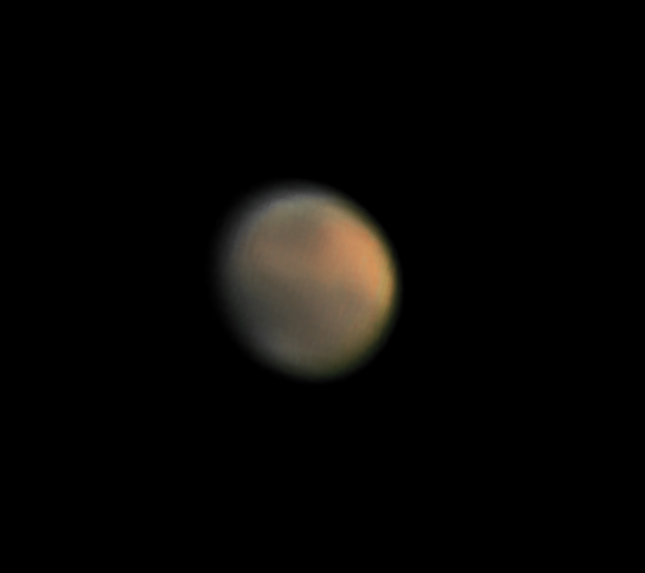Date published: 2023-02-01
Wondering how Mars looks like through a telescope?
A few days ago, on January 30, 2023, I captured Mars using a webcam (SPC900NC) attached to the Westerlund 90cm Telescope in Uppsala, Sweden. The focal length in the Nasmyth focus is 9 meter. The pixel size of the camera (5.6μm) thus leads to a pixel scale of approximately 0.13 arcsec/pixel, i.e. close to diffraction limit of the telescope. However, given that the seeing was not great, the produced images will be heavily oversampled.
Mars had its closest approach to Earth (i.e. opposition) roughly two months ago. Yet, it is still very bright and easy to spot on the sky in the constellation of Taurus. However, during the last two months, the planet’s diameter has substantially shrunk from ~17 arcsec to ~11 arcsec only. As Mars now moves further away, its apparent diameter will reach a minimum of ~3.7 arcsec in December 2023. From that point on, Mars approaches Earth again and will increase to ~11 arcsec in November 2024. Finally, on January 16, 2025 the next Mars opposition will take place, providing us with a bright and shiny 14.5 arcsec diameter. I am already looking forward to that, hoping for better seeing!
The video below shows part of the original stream produced when the camera was attached to the telescope, and finally, the resulting image after aligning and stacking of approximately 2000 frames.
Processing of the captured video was done using AutoStackkert!3 (using 3x drizzle), waveSharp and Gimp. The final image was scaled down by a factor of 0.75.

